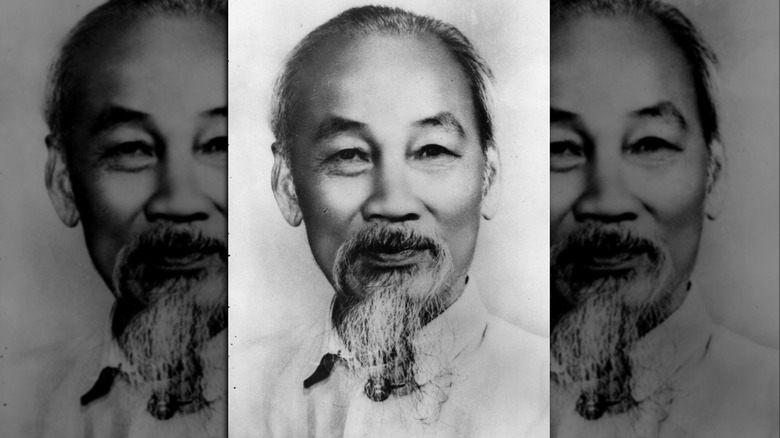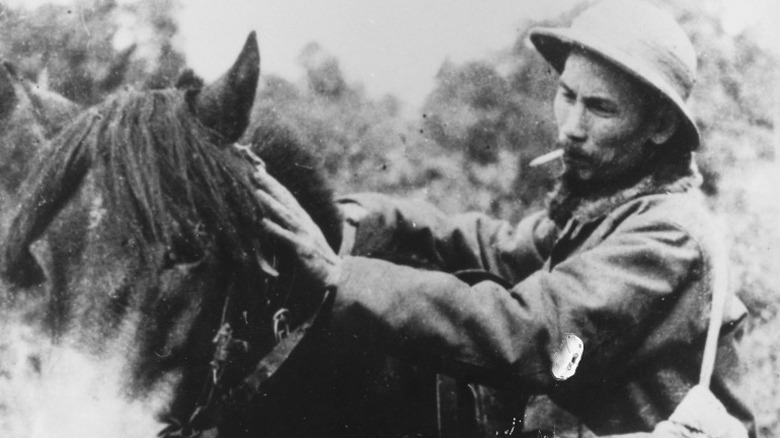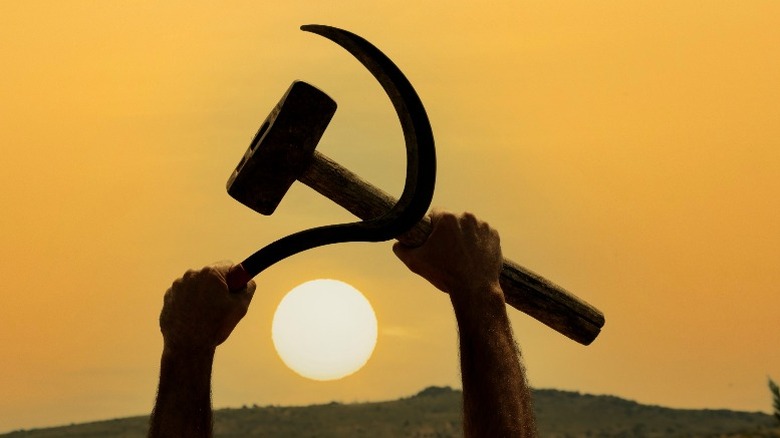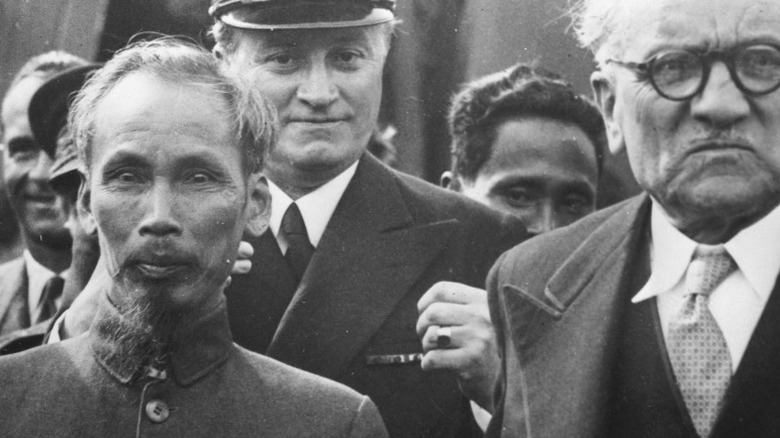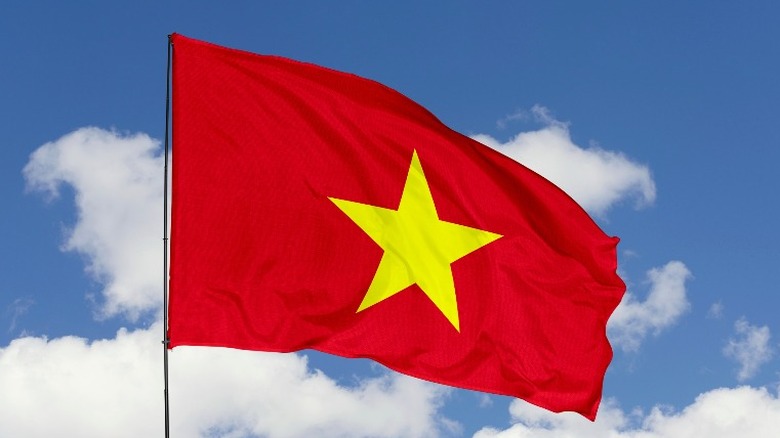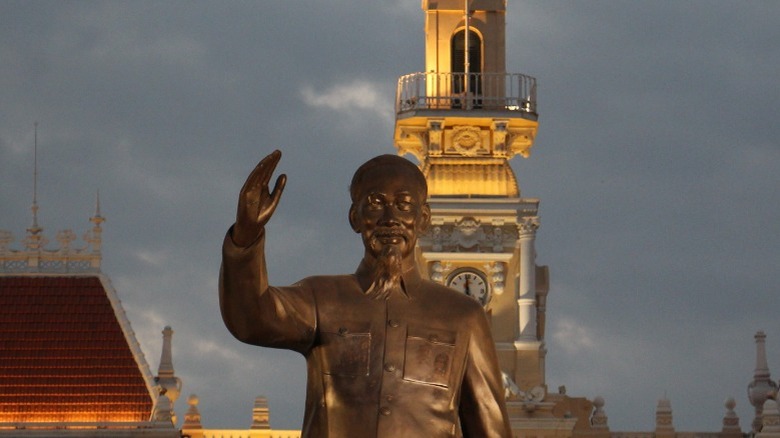What You Should Know About Ho Chi Minh
The guerilla leader and future president of North Vietnam was born Nguyen Sinh Cung on May 19, 1890. The son of a village tutor, young Cung attended many of his father's tutoring sessions and was discovered to be a quick learner (via Thought Co). Cung was learning the lessons of children much older than he, gaining knowledge that would help him when he was accepted into a primary school in the city of Hue. There, he learned the Chinese language. Pleased with the advancement in his son's education, Cung's father changed his name to Nguyen Tat Thanh (which means "Nguyen the accomplished") when he was 10 years old.
At the age of 21, Thanh was expelled from the college for protesting against the heavy French influence in his country (via History). With no school to attend, Thanh needed to find work, which he found as a cook aboard a steamship that was getting ready to leave port. This was the beginning of his storied journey into the West, which helped shape Thanh into the leader he would later become.
Experiencing the East and the West
The steamship Nguyen Tat Thanh was aboard traveled to numerous port cities all over the world (via Thought Co). He was able to visit ports on three different continents, many of which were under French colonial control. Already opposed to the influence the French had in his homeland, young Thanh's opinions of the French government further soured.
After a brief stint in the United States as a baker's assistant, Thanh entered France in 1919. It's speculated that he entered the country undocumented, as there was no record of his arrival with immigration. With World War I recently over, Western powers met in Paris to discuss and arrange the Paris Peace Conference. This attracted the attention of a good many people who were subjugated under French colonialism in Asia and Africa. Thanh signed letters demanding the end of French occupation in Indochina under the name "Nguyen Ai Quoc" — which means "Nguyen who loves his country" — and began attracting the attention of followers. While his demands were dismissed by the French government, members of the French Communist Party were taken by him.
In 1923, using the new name Ho Chi Minh, he left France for Moscow. There, he would further his studies of a philosophy he was quickly becoming familiar with.
Introduction to Communism
Working for Third Communist International, Ho Chi Minh began to familiarize himself with various strategies for fomenting a revolution. In France, he had become inspired by the Bolshevik Revolution in 1917 (via History). This prompted Minh to study the history of this successful uprising, as well as the tactics that Vladimir Lenin utilized. Minh resumed his travels across Europe before settling in Canton, China, in 1924 (via Thought Company). There, he began to train scores of fellow Indochinese citizens and organize peasants, who he taught them the economic philosophy of Communism.
His stay in China was short-lived, however. Chinese leader Chiang Kai-shek began to aggressively purge China of Communists (and anyone suspected of being a Communist) in 1927 (via Encyclopedia). These actions were in response to the growing number of Communists in China, whom Kai-shek felt were an imminent threat to his rule. Within a year, nearly 300,000 were killed. Before he could be captured, Minh fled to Hong Kong under an alias, then headed back to Moscow. But in 1941, with another global war looming, Minh went back home to Indochina.
Ridding his home of imperialism
Seeing a global war as a distraction for the French who were still colonizing Indochina, Ho Chi Minh was able to sneak back into his home country. A conflict had already broken out between China and Japan, and Japan began to retaliate against the Indochinese for sending aid to the Chinese forces. Now occupied by Japanese forces, the people of Indochina had yet another foreign power controlling them. Not wanting Japanese occupiers in Indochina, Minh organized trained guerillas — which became known as the "Viet Mihn National Front" — in attacks in opposition to the invaders (via Thought Company).
With Japan's loss of the war in 1945, Indochina was turned over to the Veit Mihn. The northern part of the country was now occupied by Allied forces, who were there to keep the peace and repatriate any remaining Japanese soldiers and citizens who were left behind. France, not wanting to lose a lucrative colony, demanded that Indochina be placed back under their control. This request was granted, resulting in another occupation by the French. Tensions escalated, and in November of 1946, a French naval fleet opened fire on the port city of Haiphong, resulting in the deaths of 6,000 Indochinese civilians (via History Net).
Aided by both Chinese and Soviet governments, the Viet Mihn was able to drive the French out of northern Indochina. Using guerilla warfare tactics and exploiting the French ignorance of the terrain, Minh helped lead his people against yet another imperialist force (via History Net). While it cost the lives of nearly 800,000 Indochinese, the French were decisively defeated in May of 1954 at the battle of Diem Bien Phu.
Uniting the north and the south
Now known as Vietnam, the Geneva Convention that followed French defeat divided the new country across the 17th parallel (via History). The Communist Party ruled the north, while the anti-Communist leader Ngo Dinh Diem (and United States ally) controlled the south. After seeing growing support of Communism in the south, Diem canceled elections indefinitely. This led to the formation of a guerilla group known as Viet Cong, who began waging small-scale battles against military forces in the south. Viet Cong appealed to the Communist North Vietnamese government for aid, which they received.
Subscribing to the "domino theory" that the fall of one nation to Communist control would lead to its neighbors suffering the same fate, the United States began to give aid to the South Vietnamese government. This aid escalated to hundreds of thousands of U.S. troops being deployed into the south to fight alongside South Vietnamese military forces. While the fighting between the north and south drug on for several years, Ho Chi Minh predicted that the U.S. would soon tire of fighting in an unpopular war (via Thought Company). In 1968, he helped launch a large offensive in the south, called the Tet Offensive. While taking lots of casualties, the north was able to show the world that the war was not winnable for the United States. The popularity of the war in Vietnam quickly began to fade in the United States, as protests and demonstrations were held all over the country.
Eventually, the United States abandoned its efforts in South Vietnam, pulling out troops entirely in 1973 (via History).
A lasting legacy
Ho Chi Minh passed away on September 2, 1969, at the age of 79 (via Thought Company). Succumbing to heart failure, the guerilla leader would not live long enough to see the end of the war. But living long enough to see the tide of the war turn in the north's favor, he probably knew that his prediction of United States forces getting fatigued was soon to be true.
In Vietnam, the city of Saigon was renamed Ho Chi Minh City in his honor in 1976. Ho Chi Mihn is revered as a hero in his home country and is featured on all of their currency. Posters, murals, and statues of the late leader decorate homes, schools, and businesses all over Vietnam, paying homage to his efforts to free his people from outside forces (via Atlas Obscura).
His influence stretched beyond the borders of Vietnam. Minh's handling of the French forces during the battle of Diem Bien Phu inspired the Algerians to revolt against their French colonizers less than a year later (via Thought Company). And although he didn't live long enough to see the end of the war, Ho Chi Mihn's tactics and resolute stance on foreign influence in his country survived him. He is regarded in an endearing manner in Vietnam, many of whose people still refer to him as "Uncle Ho" (via Biography).
